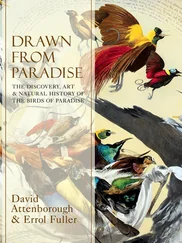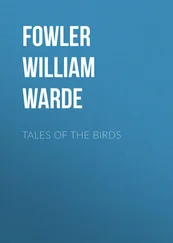William Fowler - A Year with the Birds
Здесь есть возможность читать онлайн «William Fowler - A Year with the Birds» — ознакомительный отрывок электронной книги совершенно бесплатно, а после прочтения отрывка купить полную версию. В некоторых случаях можно слушать аудио, скачать через торрент в формате fb2 и присутствует краткое содержание. Жанр: foreign_antique, foreign_prose, на английском языке. Описание произведения, (предисловие) а так же отзывы посетителей доступны на портале библиотеки ЛибКат.
- Название:A Year with the Birds
- Автор:
- Жанр:
- Год:неизвестен
- ISBN:нет данных
- Рейтинг книги:4 / 5. Голосов: 1
-
Избранное:Добавить в избранное
- Отзывы:
-
Ваша оценка:
- 80
- 1
- 2
- 3
- 4
- 5
A Year with the Birds: краткое содержание, описание и аннотация
Предлагаем к чтению аннотацию, описание, краткое содержание или предисловие (зависит от того, что написал сам автор книги «A Year with the Birds»). Если вы не нашли необходимую информацию о книге — напишите в комментариях, мы постараемся отыскать её.
A Year with the Birds — читать онлайн ознакомительный отрывок
Ниже представлен текст книги, разбитый по страницам. Система сохранения места последней прочитанной страницы, позволяет с удобством читать онлайн бесплатно книгу «A Year with the Birds», без необходимости каждый раз заново искать на чём Вы остановились. Поставьте закладку, и сможете в любой момент перейти на страницу, на которой закончили чтение.
Интервал:
Закладка:
The fact is, that for several obvious reasons, Oxford is almost a Paradise of birds. All the conditions of the neighbourhood, as it is now, are favourable to them. The three chief requisites of the life of most birds are food, water, and some kind of cover. For food, be they insect-eaters, or grub-eaters, they need never lack near Oxford. Our vast expanse of moist alluvial meadow – unequalled at any other point in the Thames valley – is extraordinarily productive of grubs and flies, as it is of other things unpleasant to man. Any one can verify this for himself who will walk along the Isis on a warm summer evening, or watch the Sand-martins as he crosses the meadows to Hincksey. Snails too abound; no less than ninety-three species have been collected and recorded by a late pupil of mine. The ditches in all the water-meadows are teeming with fresh-water mollusks, and I have seen them dying by hundreds when left high and dry in a sultry season. Water of course is everywhere; the fact that our city was built at the confluence of Isis and Cherwell has had a good deal of influence on its bird-life. But after all, as far as the city itself is concerned, it is probably the conservative tranquillity and the comfortable cover of the gardens and parks that has chiefly attracted the birds. I fancy there is hardly a town in Europe of equal size where such favourable conditions are offered them, unless it be one of the old-fashioned well-timbered kind, such as Wiesbaden, Bath, or Dresden. The college system, which has had so much influence on Oxford in other ways, and the control exercised by the University over the government of the town, have had much to do with this, and the only adverse element even at the present day is the gradual but steady extension of building to the north, south, and west. A glance at a map of Oxford will show how large a space in the centre of the town is occupied by college gardens, all well-timbered and planted, and if to these are added Christchurch Meadow, Magdalen Park, the Botanic Garden, and the Parks, together with the adjoining fields, it will be seen that there must be abundant opportunity for observations, and some real reason for an attempt to record them.
Since the appearance in the Oxford Magazine , in May, 1884, of a list of “The Birds of Oxford City,” I have been so repeatedly questioned about birds that have been seen or heard, that it is evident there are plenty of possessors of eyes and ears, ready and able to make use of them. There are many families of children growing up in “the Parks” who may be glad to learn that life in a town such as Oxford is, does not exclude them from some of the pleasures of the country. And I hold it to be an unquestioned fact, that the direction of children’s attention to natural objects is one of the most valuable processes in education. When these children, or at least the boys among them, go away to their respective public schools, they will find themselves in the grip of a system of compulsory game-playing which will effectually prevent any attempt at patient observation. There is doubtless very much to be said for this system, if it be applied, like a strong remedy, with real discriminating care; but the fact is beyond question, that it is doing a great deal to undermine and destroy some of the Englishman’s most valuable habits and characteristics, and among others, his acuteness of observation, in which, in his natural state, he excels all other nationalities. It is all the more necessary that we should teach our children, before they leave home, some of the simplest and most obvious lessons of natural history.
So in the following pages it will be partly my object to write of the Oxford birds in such a way that any one of any age may be able to recognize some of the most interesting species that meet the eye or ear of a stroller within the precincts of the city. And with this object before me, it will be convenient, I think, to separate winter and summer, counting as winter the whole period from October to March, and as summer the warm season from our return to Oxford in April up to the heart of the Long Vacation; and we will begin with the beginning of the University year, by which plan we shall gain the advantage of having to deal with a few birds only to start with, and those obvious to the eye among leafless branches, thus clearing the way for more difficult observation of the summer migrants, which have to be detected among all the luxuriousness of our Oxford foliage.
I shall call the birds by their familiar English names, wherever it is possible to do so without danger of confounding species; but for accuracy’s sake, a list of all birds noticed in these pages, with their scientific names according to the best, or at any rate the latest, terminology, will be given in an appendix.
When we return to Oxford after our Long Vacation, the only summer migrants that have not departed southwards are a few Swallows, to be seen along the banks of the river, and half-a-dozen lazy Martins that may cling for two or three weeks longer to their favourite nooks about the buildings of Merton and Magdalen. Last year (1884) none of these stayed to see November, so far as I could ascertain; but they were arrested on the south coast by a spell of real warm weather, where the genial sun was deluding the Robins and Sparrows into fancying the winter already past. In some years they may be seen on sunny days, even up to the end of the first week of November, hawking for flies about the meadow-front of Merton, probably the warmest spot in Oxford. White of Selborne saw one as late as the 20th of November, on a very sunny warm morning, in one of the quadrangles of Christchurch; it belonged, no doubt, to a late September brood, and had been unable to fly when the rest departed.
It is at first rather sad to find silence reigning in the thickets and reed-beds that were alive with songsters during the summer term. The familiar pollards and thorn-bushes, where the Willow-warblers and Whitethroats were every morning to be seen or heard, are like so many desolate College rooms in the heart of the Long Vacation. Deserted nests, black and mouldy, come to light as the leaves drop from the trees – nurseries whose children have gone forth to try their fortune in distant countries. But we soon discover that things are not so bad as they seem. The silence is not quite unbroken: winter visitors arrive, and the novelty of their voices is cheering, even if they do not break into song; some kinds are here in greater numbers than in the hot weather, and others show themselves more boldly, emerging from leafy recesses in search of food and sunshine.
Every autumn brings us a considerable immigration of birds that have been absent during the summer, and increases the number of some species who reside with us in greater or less abundance all the year. Among these is the familiar Robin. My friend the Rev. H. A. Macpherson, in his recently published Birds of Cumberland , tells us that in that northern county the Robins slip quietly away southward in autumn. And it is in September and October that every town and village in the south of England is enlivened by their numbers and the pathetic beauty of their song; a song which I have observed as being of finer quality in England than on the continent, very possibly owing to a greater abundance of rich food. I have been even tempted to fancy that our English Robin is a finer and stouter bird than his continental relations. Certainly he is more numerous here at all times of the year, and he may travel where he pleases without fear of persecution; while the French and German Robins, who for the most part make for Italy in the autumn, return in spring in greatly diminished numbers, owing to the incurable passion of the Italians for “robins on toast.”
It does not seem that they come to us in great numbers from foreign shores, as do many others of our common birds at this time of the year; but they move northwards and southwards within our island, presumably seeking always a moderately warm climate. At Parsons’ Pleasure I have seen the bushes literally alive with them in October and November, in a state of extreme liveliness and pugnacity. This is the great season of their battles. Most country-people know of the warfare between the old and young Robins, and will generally tell you that the young ones kill their parents. The truth seems to be that after their autumnal moult, in the confidence of renewed strength, the old ones attack their offspring, and succeed in forcing them to seek new homes. This combativeness is of course accompanied by fresh vigour of song. Birds will sing, as I am pretty well convinced, under any kind of pleasant or exciting emotion – such as love, abundance of food, warmth, or anger; and the outbreak of the Robin’s song in autumn is to be ascribed, in part at least, to the last of these. Other reasons may be found, such as restored health after the moult, or the arrival in a warmer climate after immigration, or possibly even the delusion, already noticed, which not uncommonly possesses them in a warm autumn, that it is their duty to set about pairing and nest-building already. But all these would affect other species also, and the only reason which seems to suit the idiosyncrasies of the Robin is this curious rivalry between young and old.
Читать дальшеИнтервал:
Закладка:
Похожие книги на «A Year with the Birds»
Представляем Вашему вниманию похожие книги на «A Year with the Birds» списком для выбора. Мы отобрали схожую по названию и смыслу литературу в надежде предоставить читателям больше вариантов отыскать новые, интересные, ещё непрочитанные произведения.
Обсуждение, отзывы о книге «A Year with the Birds» и просто собственные мнения читателей. Оставьте ваши комментарии, напишите, что Вы думаете о произведении, его смысле или главных героях. Укажите что конкретно понравилось, а что нет, и почему Вы так считаете.












